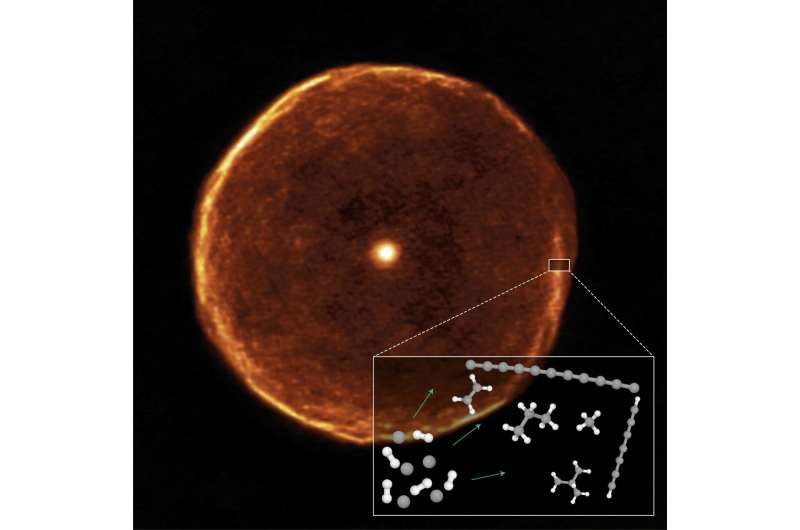October 23, 2019 report
Stardust machine shows presence of carbon nanograins, molecular compounds but few aromatics

A team of researchers affiliated with several institutions in Spain and one in France has built what they call their Stardust machine—a device that mimics the activity around a red giant where real stardust forms. In their paper published in the journal Nature Astronomy, the group describes their new machine and what it showed them about the means by which stardust forms naturally. Michael Gatchell, with Stockholm University, has published a News & Views piece discussing the work in the same journal issue.
Red giants are very large stars that are believed to be in a late stage of development in which their hydrogen has been depleted, leaving no fuel for fusion reactions. Scientists study them because they are believed to provide the building blocks for planets and other objects in the universe. Astronomers also believe that they are the source of stardust that exists in the interstellar medium. Stardust is believed to originate in the envelope that surrounds a red giant and has a complex composition—in addition to the interstellar molecule, scientists have identified over 200 unique molecular species. But because of the hostile environment in which stardust originates, it has been difficult for scientists to figure out how it forms.
Most experiments to mimic the process involve burning chemicals or plasma decomposition—but they have not yielded the answers researchers have been looking for. In this new effort, the researchers have taken another approach—building a machine to mimic the conditions in a red giant envelope. The researchers call it simply Stardust. With the ultra-high vacuum machine, researchers carry out bottom-up stardust formation experiments. Such experiments involve combining atomic gas aggregates with in situ characterizations.
The researchers report that experiments using Stardust have revealed that carbonaceous dust particles similar to those believed to be created near red giants could lead to the creation of randomly shaped carbon materials. They also found that aromatic species and fullerenes were not created under such conditions, which went against current theories regarding stardust formation. They suggest their findings are likely going to force a revision in circumstellar envelope theory.
More information: Lidia Martínez et al. Prevalence of non-aromatic carbonaceous molecules in the inner regions of circumstellar envelopes, Nature Astronomy (2019). DOI: 10.1038/s41550-019-0899-4
Journal information: Nature Astronomy , Nature
© 2019 Science X Network





















